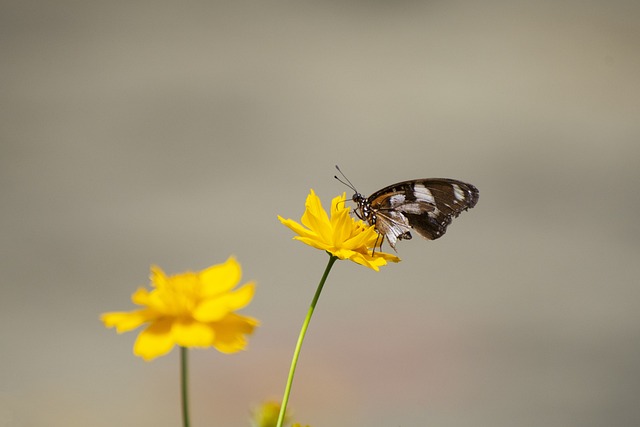Psocids, tiny insects infesting libraries, archives, and historical sites, cause extensive damage to materials and structures. Effective pest control for psocids requires understanding their behavior, breeding patterns, and adaptability. Comprehensive inspections, using tools like UV lights and pheromone traps, along with data analysis, are vital. A dual approach of management and prevention—including regular cleaning, sealing entry points, and proper ventilation—breaks the psocid lifecycle and minimizes their impact.
Psocids, or book lice, are persistent pests that can wreak havoc on homes and businesses. Understanding their behavior and life cycle is crucial in effective pest control. This article delves into the critical role of thorough inspections in identifying psocid activity and breeding sites, essential steps for successful management. We explore comprehensive strategies to locate hidden niches where these insects thrive, providing practical techniques to prevent and mitigate infestations, offering valuable insights for anyone seeking pest control for psocids.
Understanding Psocid Infestations and Their Impact
Psocids, also known as book lice or bark lice, are tiny insects that can cause significant damage to various materials and structures. These pests are particularly notorious for infesting libraries, archives, museums, and historical sites, feeding on paper products, textiles, wood, and even natural fabrics. Understanding their behavior and life cycle is crucial in implementing effective pest control for psocids.
An infestation can go unnoticed for extended periods due to the small size of psocids, making them adept at hiding in tight spaces. They breed rapidly, with female psocids laying hundreds of eggs over their lifetime. Their ability to survive on a diverse range of organic materials means they can thrive in seemingly unrelated environments. When left unchecked, psocid infestations can lead to substantial losses, damaging historical artifacts, causing structural issues, and even posing health risks by triggering allergies or respiratory problems in sensitive individuals.
The Role of Inspections in Pest Control for Psocids
Thorough inspections play a pivotal role in effective pest control for psocids, also known as book lice. These meticulous assessments are essential tools for identifying not only active psocid infestations but also their breeding sites. By systematically examining areas prone to moisture accumulation and organic debris, professionals can pinpoint hidden niches where these tiny pests thrive. This proactive approach is crucial in the battle against psocids, as it allows for targeted treatment strategies that disrupt their life cycles and prevent future outbreaks.
Well-conducted inspections enable pest control specialists to develop tailored solutions. They can recommend specific measures to eliminate breeding sites, such as improving ventilation, reducing moisture levels, and properly storing susceptible items like books or textiles. Regular monitoring and follow-up inspections further strengthen the pest control for psocids, ensuring that any recurring issues are addressed promptly, thus maintaining a hygienic and psocid-free environment.
Comprehensive Strategies for Identifying Breeding Sites
Comprehensive inspections are key to identifying psocid breeding sites, an essential step in effective pest control for psocids. Beyond visually inspecting areas prone to moisture buildup and organic debris—common attractions for these tiny insects—it’s crucial to employ a multi-faceted approach. This includes using specialized tools like magnifying glasses and UV lights to detect eggs, nymphs, and adults hidden in crevices or under surfaces. Traps baited with pheromones can also provide valuable data on psocid activity and help pinpoint areas of high infestation.
Additionally, documenting the environment—noting locations, conditions, and materials present—can offer insights into why certain sites are attracting psocids. This information guides targeted interventions, ensuring that pest control measures address both current breeding grounds and potential future sites. Regular monitoring, combining visual inspections, bait traps, and environmental data analysis, creates a robust strategy for identifying and eliminating psocid breeding sites, thereby breaking their lifecycle and minimizing their impact.
Effective Management and Prevention Techniques
Effective management and prevention techniques are crucial in combating psocid infestations, a key aspect being thorough inspections. Regularly checking hidden areas such as crevices, corners, and cracks for signs of psocids can help identify potential breeding sites early on. This proactive approach allows for quicker intervention using appropriate pest control methods for psocids.
Implementing preventive measures is another powerful tool in the battle against these tiny invaders. Maintaining cleanliness, especially in areas prone to moisture build-up, significantly reduces their habitat. Sealing entry points and ensuring proper ventilation further discourages their presence. These strategies not only curb current infestations but also serve as robust defenses against future psocid activity.
Psocid infestations can be effectively managed through a multi-faceted approach, with thorough inspections playing a pivotal role in identifying breeding sites. By combining these findings with comprehensive strategies and robust management techniques, professional pest control for psocids becomes both efficient and sustainable. Regular, detailed assessments enable proactive measures to prevent and eliminate these pesky insects, ensuring a cleaner, more comfortable living or working environment.
